Castles and palaces
The Bergstraße – historical trade route between Francort and Heidelberg – offers a colourful panoply of medieval towns, castles and palaces. Festivals, tournaments as well as themed events are staged.
Remnants of the Roman Empire point to the region’s former importance as a trade and army route. Monuments that bear witness to different eras can be found between Darmstadt and Heidelberg, ranging from Roman relics in Ladenburg, Heidelberg Castle dating from the 13th century, Darmstadt’s Residenzschloss palace through to the summer residence of Ludwig X of Hesse-Darmstadt in the Auerbacher Fürstenlager State Park.
Take a walk on the Burgensteig (Bergstrasse Castle Trail) and experience some of die Highlights of the.
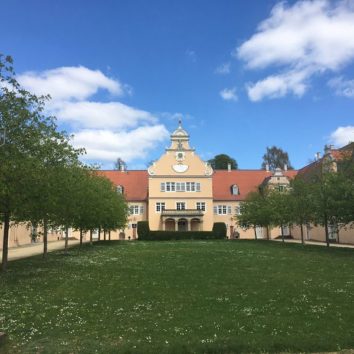
Jagdschloss Kranichstein
Kranichstein castle, which was used as a hunting lodge, is idyllically situated amid beautiful woods, fields and ponds on the northern edge of Darmstadt. The Renaissance castle was built in the 16th century and now houses a hunting museum.
Mehr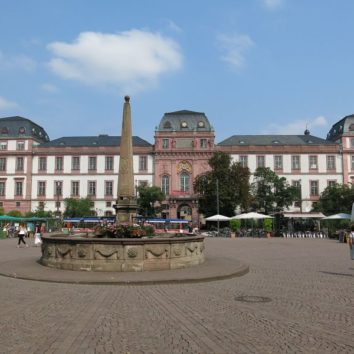
Residenzschloss Darmstadt
The Residential Palace Darmstadt (often also called Stadtschloss) is the former residence and administrative seat of the landgraves and from 1806 to 1919 of the Grand Dukes of Hesse-Darmstadt. It is located in the centre of the city of Darmstadt.
Mehr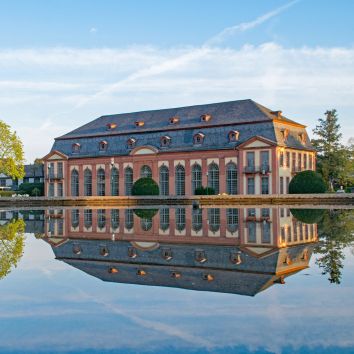
Orangerie Darmstadt
The Orangerie situated in Darmstadt’s Bessungen district is a small palace designed by architect Louis Rémy de la Fosse, which was used as a winter shelter for orange trees from the surrounding park. Today the Orangerie is a venue for concerts and conferences.
Mehr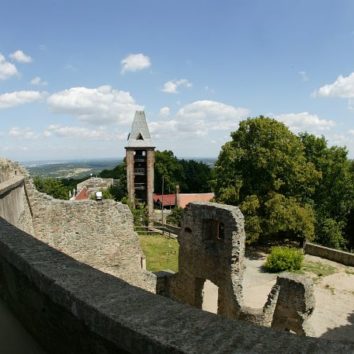
Burg Frankenstein
Frankenstein Castle lies to the south-east of Darmstadt’s Eberstadt district on the border to the Mühltal municipality, and is the northernmost of a series of intact and ruined castles on the western edge of the Odenwald, with a view of the Rhine Plain.
Mehr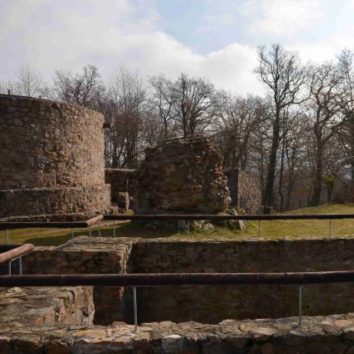
Burgruine Tannenberg
Tannenberg Castle, now ruined, was built around 1232 by Ulrich von Münzenberg to defend the southernmost border of the area under his jurisdiction. It was first mentioned in records in 1239 as „Seeheim Castle“.
Mehr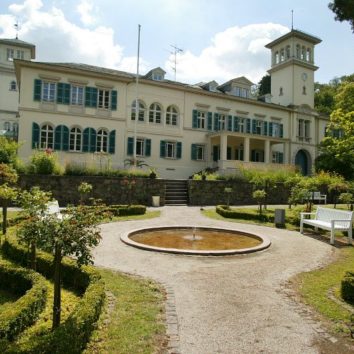
Schloss Heiligenberg
The Mountbattens (in German: Battenbergs) converted a country estate in Jugenheim to a the residence Heiligenberg Castle from 1862 to 1867. In the 19th century it was a meeting point for the members of many royal families, including the Czar of Russia.
Mehr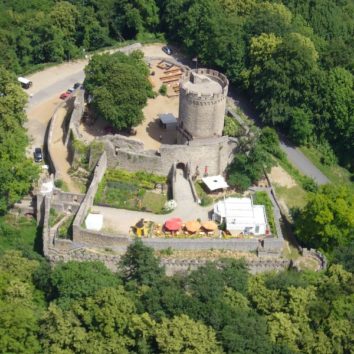
Alsbacher Schloss
Alsbach Castle (also known as Bickenbach Castle) was built around 1235 by the lords of Bickenbach on the 257m hill above the village of Alsbach, which was already mentioned in 773 in the Lorsch Codex.
Mehr
Auerbacher Schloss
The fortress of Auerbach Castle was probably built in the 13th century by the Counts of Katzenelnbogen. Remnants of the Bergfried (the free-standing fighting tower) are all that are left of the original castle complex.
Mehr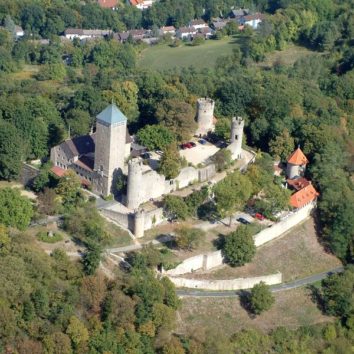
Starkenburg Heppenheim
Starkenburg is the oldest and largest documented castle on the Bergstraße, and was built in 1065 on the 295m-high Schlossberg to protect Lorsch Abbey.
Mehr
Rothschild-Schloss Hemsbach
Rothschild Palace, which has belonged to the town of Hemsbach since 1925 and is now used as the town hall, was built as a villa in 1764 (the central part). It was bought by Baron Rothschild in 1839 and extended in its present form including its park.
Mehr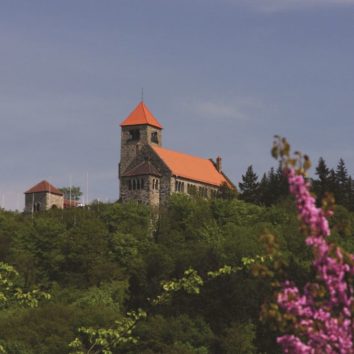
Wachenburg Weinheim
Weinheim’s second castle, built almost on the crest of the Wachenberg, was erected from 1907-1928 and is the last castle to be built along the Bergstrasse.
Mehr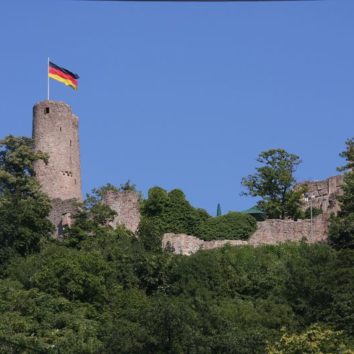
Burgruine Windeck Weinheim
Windeck Castle, which was built after 1100 to protect Lorsch Abbey, was destroyed in the late 17th century. Its ruins have belonged to the town of Weinheim since 1978.
Mehr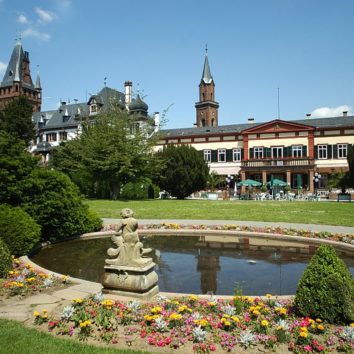
Weinheimer Schloss
The former castle, dating from around 1400, is now the town hall and seat of the town council. To the north it is annexed to the Kurpfälzisches Schloss, a Renaissance palace built in 1537.
Mehr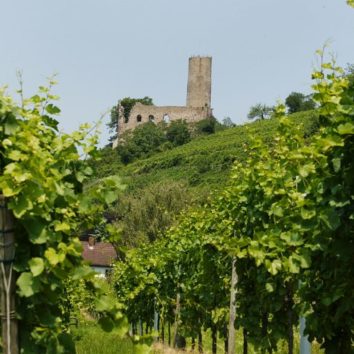
Strahlenburg Schriesheim
The lords of Strahlenberg built a castle prior to 1237 on the slopes of the Ölberg. The remains of the massive walls of the residential quarters with their striking window façade, which can be seen from afar, have become the symbol of Schriesheim, together with the Bergfried (free-standing fighting tower).
Mehr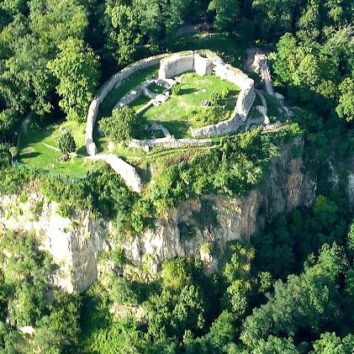
Schauenburg Dossenheim
The ruined castle of Schauenburg, which dates from the 13th to 15th century and is now classed as a historic monument, was destroyed in 1460 by Count Palatine Frederick I, the Victorious.
Mehr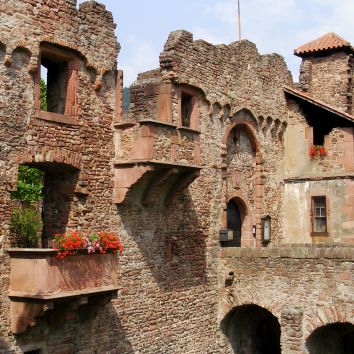
Tiefburg Handschuhsheim
Tiefburg Castle in Heidelberg’s Handschuhsheim district was formerly the seat of the local nobility. The heart of the medieval moated castle has been restored, and the ruins lie along the Blütenweg (Blossom Trail).
Mehr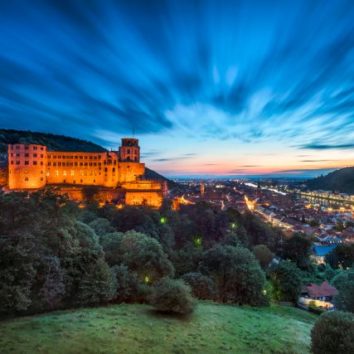
Schloss Heidelberg
Heidelberg Castle is one of Germany’s most significant cultural monuments and is considered the symbol of the town of Heidelberg. It attracts hundreds of thousands of visitors each year and is located at the end of the Bergstraße Burgensteig (Castle Trail).
Mehr
